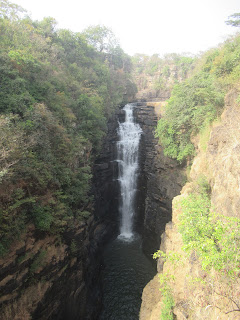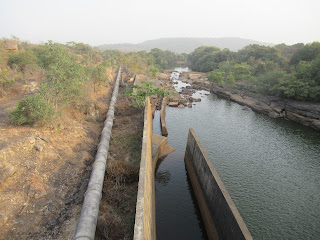And yet another border and we were into Sierra Leone. But there was a problem near the border with a long tail back of vehicles. A lorry had broken down in the middle of the road and an overladen taxi had tried to get past on the camber at the side of the road and had fallen over onto its side so only cars could pass. In our overloading vehicle, we bumped across some farmers tracks and got past that way.
And a reminder that the country was hit hard by Ebola not long ago.
It is presidential election time in Sierra Leone and there are promotion posters every where.

We ran parallel to a railway track for a while but I didn't see any trains.
separating a mixture of savannah and jungle.
I left the track on the beach and headed into Freetown for a few days but actually took few photos as chiefs are very active and I often went out with any camera of ruck sack to make sure I didn't lose anything. Here is the Cotton Tree in the centre of the city which was allegedly here when the first freed slave were relocated here from the Caribbean in 1769.
I couldn't resist a photo of this building in downtown Freetown.
And the view from my hotel room...it looks misty but it is in fact dust and smoke from forest fires.

































































